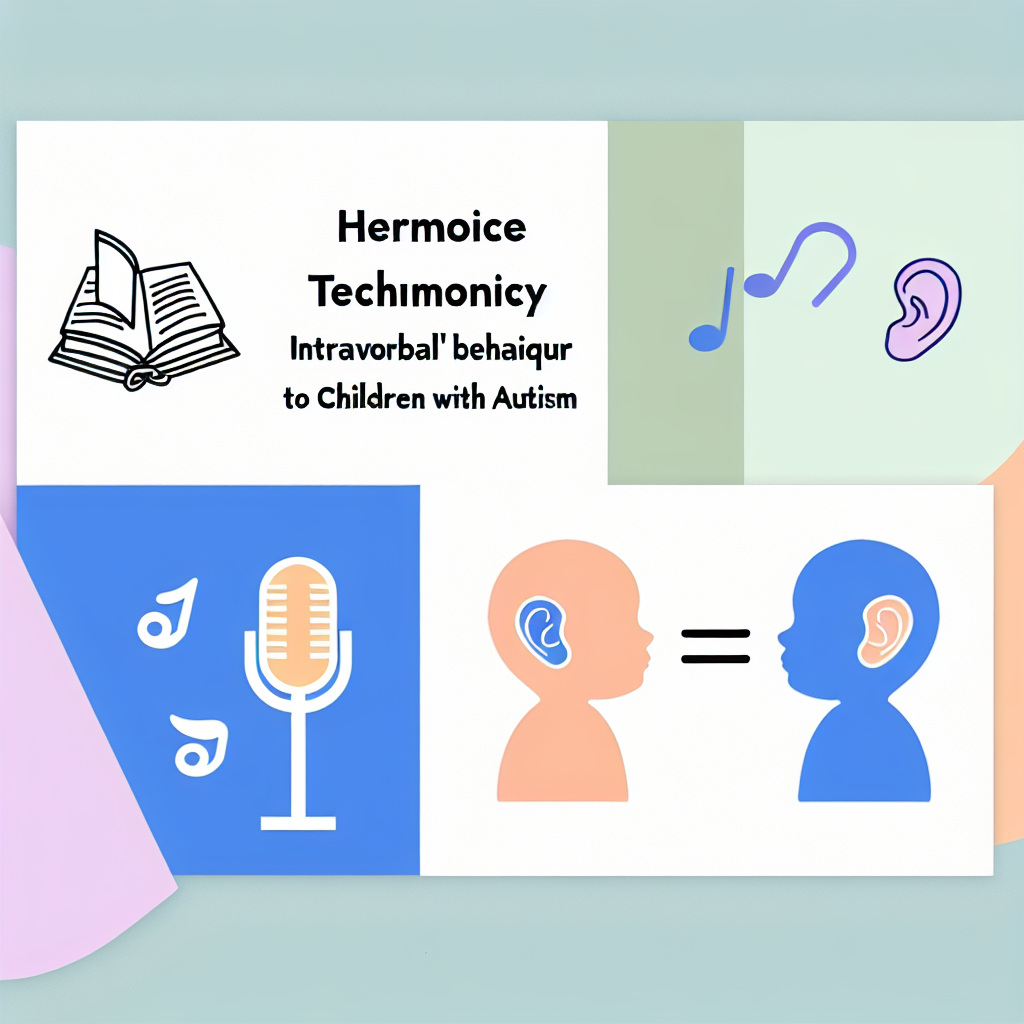Comparing Echoic and Listener Responding in Teaching Intraverbal Behavior
Introduction
Helping children with Autism Spectrum Disorder (ASD) develop language skills is a key goal in Applied Behavior Analysis (ABA). One of the most challenging areas of language is intraverbal behavior, which involves responding to words or phrases without direct visual or physical cues. Examples include answering questions, engaging in conversations, or completing word associations.
Nouf M. Alzrayer (2024) conducted a study to compare two teaching methods—**echoic prompts (repeating words aloud) and listener responding prompts (selecting the correct response from an array)**—to determine which was more effective in teaching complex intraverbal responses in children with ASD. The study was published in Behavior Analysis in Practice and highlights valuable insights for ABA practitioners.
Why Intraverbal Behavior Matters
Intraverbal skills are essential for:
- Conversational abilities – Engaging in back-and-forth exchanges.
- Academic success – Answering questions and participating in classroom discussions.
- Social interactions – Understanding and responding meaningfully in conversations.
Many children with ASD struggle with intraverbal learning because it requires responding without direct prompts or physical cues. ABA programs emphasize transfer-of-stimulus control, where different teaching strategies help improve a child’s ability to generate appropriate verbal responses.
Research Background
Prior studies have shown that:
- Echoic prompts (repeating words aloud) help reinforce correct verbal responses.
- Textual prompts (reading words or phrases) can improve recall but may not generalize to spoken conversations.
- Listener responding (selecting correct responses from visual choices) helps children pair words with objects or concepts, potentially aiding future vocal responses.
The effectiveness of different strategies varies from child to child, making it crucial to study which methods result in better generalization and long-term retention.
Study Design and Participants
The research (Alzrayer, 2024) included:
- Four children with ASD (ages 5 to 7), all receiving ABA therapy for 24–35 hours per week.
- A nonconcurrent multiple baseline design across participants to ensure treatment effects were not due to external factors.
- An alternating treatments design to compare echoic and listener responding methods directly.
Intervention Procedures
-
Initial Assessment – Researchers conducted baseline assessments using the Verbal Behavior Milestones Assessment and Placement Program (VB-MAPP) to determine each child’s skill level.
-
Two Teaching Methods – Each child was taught complex intraverbal responses using both:
- Echoic Training: Child repeated the correct response after the instructor.
- Listener Responding Training: Child selected the correct response from an array of images or objects instead of repeating it aloud.
-
Testing Generalization – After training, researchers checked whether children could respond correctly without prompts.
Results and Implications for ABA Practitioners
Key Findings
-
Echoic prompting led to faster acquisition for most participants.
- Children learned new responses more quickly when they repeated words aloud.
- Repetition helped establish direct verbal-motor connections, improving retention.
-
Listener responding helped with concept understanding but required more steps.
- Some children initially responded correctly when selecting from an array but struggled to say the response when given only a verbal cue.
- Additional transfer-of-stimulus strategies were needed to bridge this gap.
-
Individual differences played a major role.
- Some children showed stronger preference and success with one method over the other.
- Clinicians should monitor progress and adjust their teaching approach based on the child’s response style.
Practical Takeaways
ABA therapists and educators can apply these findings by:
- Using echoic prompts first when the goal is verbal production. Children tend to learn faster when they practice saying words aloud.
- Pairing listener responding with additional verbal practice. Selecting correct responses alone may not immediately lead to verbal generalization, so it’s important to mix both techniques.
- Tailoring instruction based on individual learning patterns. Some children benefit from one approach more than another, requiring a flexible teaching strategy.
Conclusion
Alzrayer’s study provides important insights into teaching intraverbal behavior in children with ASD. The research suggests that both echoic and listener responding methods have benefits, but echoic training may lead to faster verbal learning in some cases. ABA practitioners should consider individual differences and ensure that techniques are combined strategically for the best results.
For more details, read the full research article:
Alzrayer, N. M. (2024). Comparing the Effect of Echoic and Listener Responding in the Development of Complex Intraverbals. Behavior Analysis in Practice, 17, 189–198.
https://doi.org/10.1007/s40617-023-00822-z



